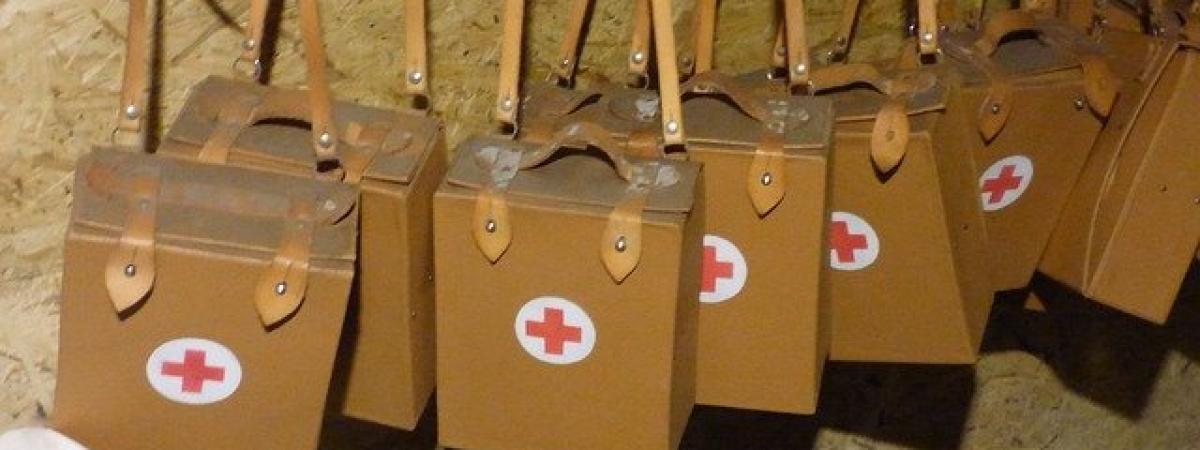Medical lessons from the battlefield

War’s only silver lining is to advance medical understanding. During World War 2, eye injuries sustained by pilots led to the subsequent transformation of cataract surgery, ophthalmologist Sir Harold Ridley being so struck by the way that the human eye could tolerate penetration with shards of acrylic from the shattered canopy of the plane after gunfire attack that he reasoned that an artificial lens could be created from a similar material – and so it was. No longer was sight lost with cataract removal; post-operative thick bottle-bottomed spectacles were now replaced with a man-made lens, removing stigma and restoring sight.
It took two world wars and hundreds of wounded soldiers to begin to understand a strange side effect of spinal cord injury that could be very serious. I have accessed the seminal papers describing this condition, written after each of the world wars.
Notes after World War 1
Writing in 1917, George Riddoch, Captain of the Royal Army Medical Corps, and Dr Henry Head, Fellow of the Royal Society, begin by stating that “the present war has afforded innumerable opportunities for investigating the phenomena due to gross injuries of the spinal cord”. They graphically describe the symptoms seen in eight case studies, two of which are summarised here.
Case study 1
Injury: Total division of the spinal cord at the level of the sixth dorsal segment. Complete loss of voluntary power and sensation below this level.
Symptoms: Paroxysmal sweating, which could be invoked by injecting the bladder or rectum, or by producing flexor spasms from parts below the lesion. He declared he could usually tell when sweating was about to begin by the onset of “drumming in the head or a feeling of fatheadedness”.
Case study 5
Injury: Fracture-dislocation of the fifth and sixth cervical vertebrae. Paralysis of the trunk and limbs below the level of the third rib and most of the movements of both upper extremities.
Symptoms: About fifty days after the injury, or a little earlier, he began to be troubled with profuse sweating over the head, neck, arms and down to about the level of the third rib on the trunk. It gradually became so profuse that it poured from his face and neck and soaked the blankets on his bed. This hyperhidrosis was peculiarly liable to be associated with a full bladder or with intestinal distension.
In all the case studies described, the pulse tended to become “slower, more forcible and somewhat irregular whenever an outburst of sweating was produced”. Strange symptoms indeed brought to medical attention because of the burst of battlefield injuries.
Notes after World War 2
In 1947, Sir Ludwig “Poppa” Guttmann, neurologist and founder of the Paralympic Games, wrote a paper on similar sets of symptoms observed after spinal cord injuries inflicted during the World War 2.
Studying 30 patients with severe spinal cord injury (mostly after gunshot), he describes how distension of the bladder elicited “patchy flushing of the upper chest and shoulders, neck and face” due to vasodilatation. Nasal blockage, a slow pulse, occasional arrhythmia and headache were also observed. Blood pressures, meanwhile, often soared to levels such as 250/150 mm Hg (particularly alarming since the usual resting blood pressure in subjects with spinal cord lesions is actually 20 mm Hg lower than in able-bodied subjects).
Guttmann reasoned that “distension of a visceral organ, such as the bladder, situated in the paralysed part of the body, had set up a response of autonomic mechanisms, which had induced profound effects on the cardiovascular activity in parts of the body above the level of the spinal lesion.”
Notes from more recent history
My husband, spinal cord injured for more than thirty years, experienced these symptoms a couple of years ago. Lying in bed one night he suddenly experienced a severe headache, dilated pupils, beads of sweat on his forehead and chest, bradycardia and a blood pressure of 280/130.
The condition is known as autonomic dysreflexia. As its name suggests, it is thought to result from some problem in the autonomic nervous system. What probably happens is that a stimulus such as a full bladder triggers a normal response from the sympathetic nervous system (raised blood pressure, vasoconstriction….). This response would usually be detected and opposed by nerve impulses travelling down the spinal cord in the parasympathetic nervous system. In spinal cord injury, these messages are blocked: an excess of sympathetic activity is observed below the spinal cord lesion; parasympathetic overdrive is manifest above the lesion (vasodilation, sweating, headache…..)
Triggers as diverse as bladder distension, constipation, skin lesions, toenails, pregnancy, constrictive clothing and muscle spasm can all trigger autonomic dysreflexia. Untreated, seizure, stroke and death can result; thankfully, the condition usually self-resolves, especially if the patient sits up (to drop blood pressure) and removes the offending trigger. Quick-acting anti-hypertensives can be used. More important than medication, however, is awareness amongst ambulance staff: something that is poorly lacking.
Head H, Riddoch G (1917) The automatic bladder, excessive sweating and some other reflex conditions, in gross injuries of the spinal cord. Brain 40: 188-263
Guttman L, Whitteridge D (1947) Effects of bladder distension and autonomic mechanisms after spinal cord injuries. Brain 70: 361-404
Thank you to Helen C. Cowan for this guest post. Helen Cowan studied physiology to PhD level at Oxford before working as a nurse and freelance health writer. She writes regularly for the Readers Digest, Hippocratic Post and British Journal of Cardiac Nursing.
